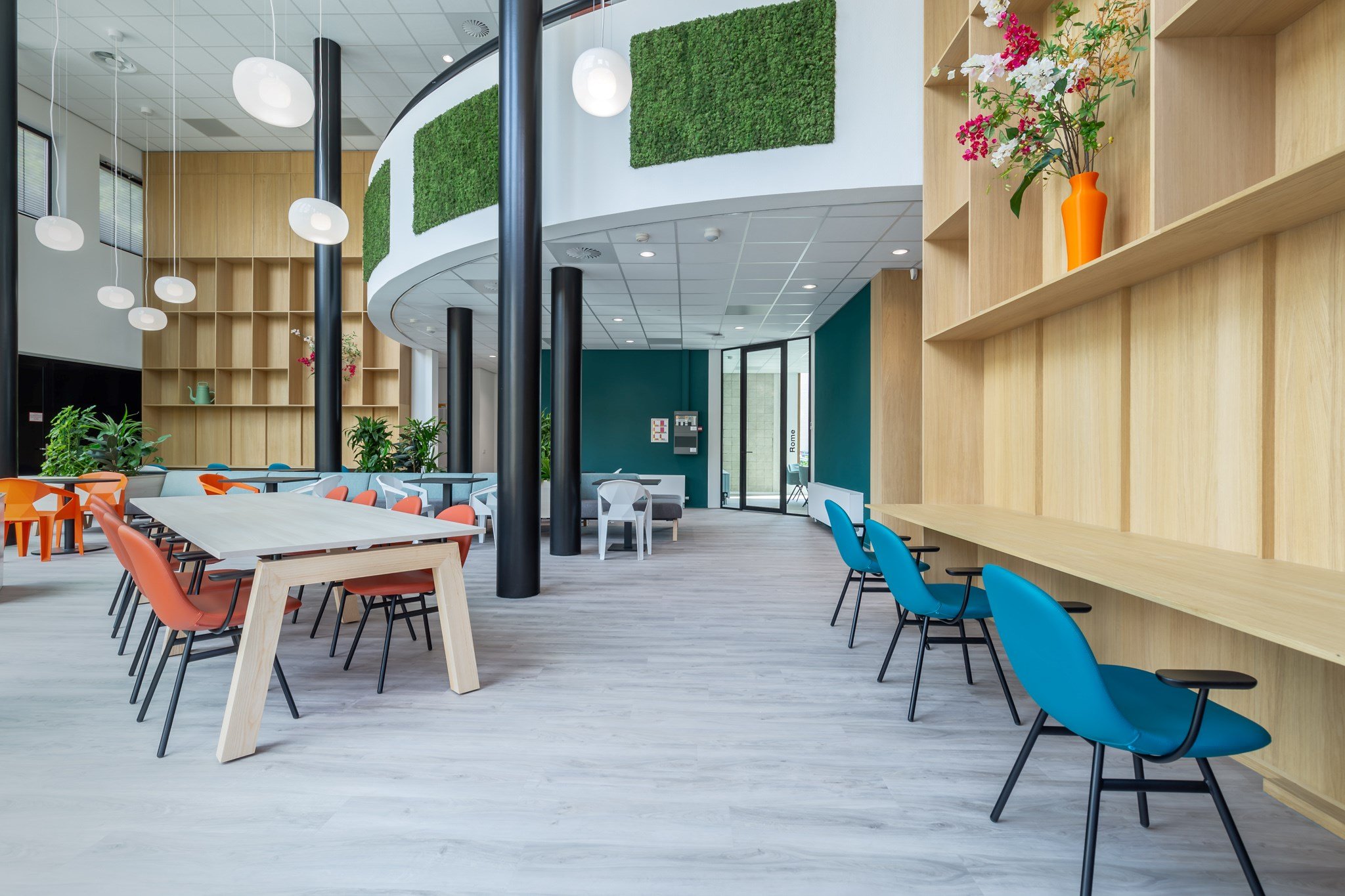“We continue to see strong demand for retrofit lighting projects around Europe. The high cost of energy and the EU-wide phase-out of fluorescent lighting are causing more customers to retrofit LED luminaires in their buildings,” said Astrid Simonsen Joos, Group CEO, Glamox. “Making the switch can save customers up to 50 percent on electricity compared with their old lighting system. The addition of a light management system to control the new LED luminaires can boost energy savings by up to 90 percent. This rush to retrofit buildings is hastening the uptake of connected lighting.”
Energy savings with style
A typical energy-saving retrofit project was recently completed for ICT solutions and services company Axians, at its offices in Capelle aan den IJssel in the Netherlands. It switched from traditional fluorescent tube luminaires to stylish connected LED lighting. Glamox provided 800 LED luminaires, including ceiling and surface-mounted luminaires, downlighters, and elegant pendant luminaires. The lighting is controlled wirelessly by a Glamox Wireless Radio light management system using a tablet. Light switches are not needed as the luminaires are fitted with ‘presence detection sensors’ so that they switch on and off automatically. For this project, the control technology, in combination with energy-efficient LED luminaires, reduces the use of electricity by up to 85 percent compared with the previous lighting installation. What’s more, in the future the lighting system will report on energy consumed, luminaire status, and room occupancy.
“With the current energy prices our decision to replace our fluorescent luminaires was a wise one,” says Peter Booms, Procurement Manager at Axians. “The installation went smoothly. Connecting them by secure wireless technology meant no rewiring was needed and the installation was quick. Furthermore, the system is future-proofed and can be easily expanded. The lighting meets our requirements both decoratively and functionally. Our users are satisfied, and we are more energy efficient and more sustainable too.”
Satisfying the RoHS directive
NOV Inc, the global energy technology and services company, has used the phase-out of fluorescent lighting across Europe as an opportunity to completely upgrade its lighting in its offices in Kristiansand and its offices and warehouse in Stavanger, Norway.
It is replacing its fluorescent luminaires with around 750 LED luminaires at each location. Nearly all the luminaires are controlled using a Glamox Wireless Radio light management system and equipped with presence sensing and daylight harvesting capabilities so that the lights are only activated when needed. This has the benefit of reducing energy consumption further.
“We saw the impending phase-out of fluorescent lighting and took the opportunity to swap it out for a smart LED lighting system that both improves the quality of the light for our people and reduces our electricity consumption. Being able to control our luminaires wirelessly, simplified the installation and enabled us to set a comfortable light level which turned out to be 40 percent lower than we had before,” said Peter John Eggleton, Leader Technical Maintenance, NOV Rig Technologies. “Given current energy prices, the return on investment for this project is around 1.6 years which made it a no-brainer.”

The linear fluorescent tube luminaires in the offices in Kristiansand and Stavanger were replaced with new Glamox C77 ceiling panel luminaires, and Glamox C80 luminaires in the reception and in some meeting rooms, while the warehouse in Stavanger uses the robust Glamox i81 luminaire and the Glamox i10 luminaires. The installation is expected to be completed this month.
As a consequence of the RoHS directive, Glamox conservatively estimates that more than 10 million fluorescent tube lights in Norway alone will need replacing over time.
,(0.5,0.5,1,1)&format=jpg)